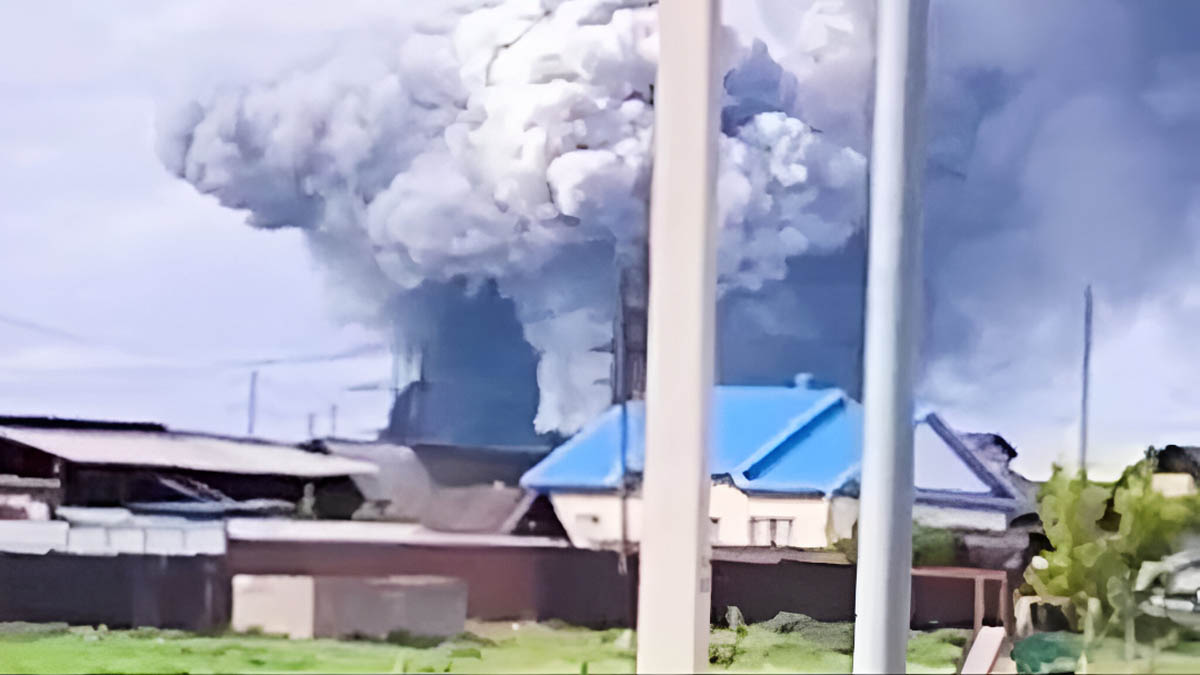Now Reading: Kyiv’s Drones Penetrate Deep into Russian Territory, Striking Strategic Bombers and Cruise Missile Carriers
-
01
Kyiv’s Drones Penetrate Deep into Russian Territory, Striking Strategic Bombers and Cruise Missile Carriers
Kyiv’s Drones Penetrate Deep into Russian Territory, Striking Strategic Bombers and Cruise Missile Carriers

In a significant escalation of the ongoing conflict, Ukraine has claimed responsibility for a sophisticated and far-reaching drone operation that reportedly hit multiple Russian airfields, causing substantial damage to strategic bombers and cruise missile carriers deep inside Russian territory. This audacious strike, dubbed “Operation Spider’s Web” by Ukrainian security services, represents one of Kyiv’s most impactful long-range assaults since the full-scale invasion began in February 2022.
According to Ukrainian officials, the operation, which took over 18 months to plan and was personally supervised by President Volodymyr Zelenskyy, involved the covert transportation of drones into Russia. These drones were reportedly hidden within specially constructed wooden cabins mounted on trucks, allowing them to be launched from close proximity to their targets, even thousands of kilometers from the Ukrainian border. Ukrainian sources claim that the strikes destroyed or severely damaged more than 40 Russian aircraft, including Tu-95 and Tu-22M3 strategic bombers, which are crucial for Russia’s long-range missile attacks on Ukraine, as well as A-50 early warning and control aircraft. The estimated damage is said to be around $7 billion.
The targeted airfields include Belaya air base in Russia’s Irkutsk region, over 4,000 kilometers from Ukraine, and Olenya air base in Murmansk Oblast, approximately 2,000 kilometers away. Reports also indicate drone activity in the Ryazan, Ivanovo, and Amur regions. While Russia’s Defense Ministry confirmed attacks on airbases in five regions, it claimed that many were repelled and that fires caused by the drones were extinguished without casualties. However, pro-Russian military bloggers have described the events as a “black day for aviation” and a “very heavy blow,” highlighting potential shortcomings in Russian intelligence and air defense.
The success of “Operation Spider’s Web” underscores Ukraine’s evolving long-range drone capabilities and its capacity to conduct complex, coordinated strikes on high-value targets deep within enemy territory. The use of FPV (First-Person View) drones, often smuggled close to their targets, likely allowed them to evade Russian electronic warfare systems and traditional air defenses that are typically geared towards larger, more conventional aerial threats. This new modus operandi demonstrates Ukraine’s innovation in asymmetric warfare.
The timing of these attacks is also notable, occurring just ahead of a new round of direct peace talks between Russia and Ukraine in Istanbul. Analysts suggest that the strikes could be a strategic move by Kyiv to increase pressure on Moscow and gain leverage at the negotiating table, demonstrating Ukraine’s continued ability to inflict significant costs on Russia’s war effort, even as fighting intensifies along the front lines and Russia continues its own large-scale drone and missile attacks on Ukrainian cities. The long-term impact on Russia’s strategic aviation fleet, particularly its ability to replace these complex and expensive aircraft, remains to be seen










